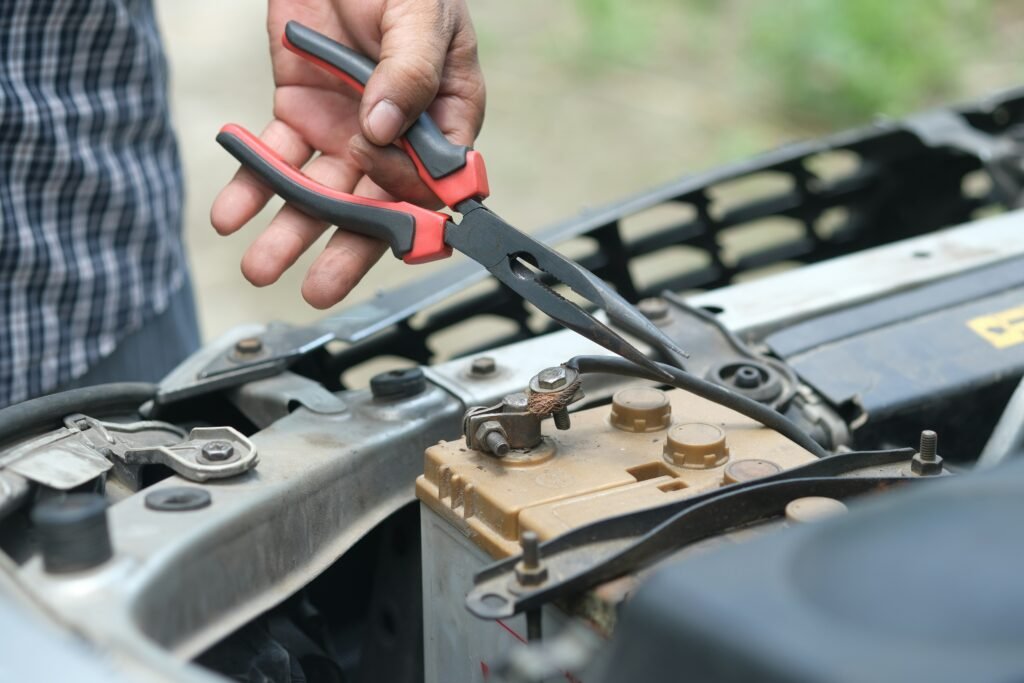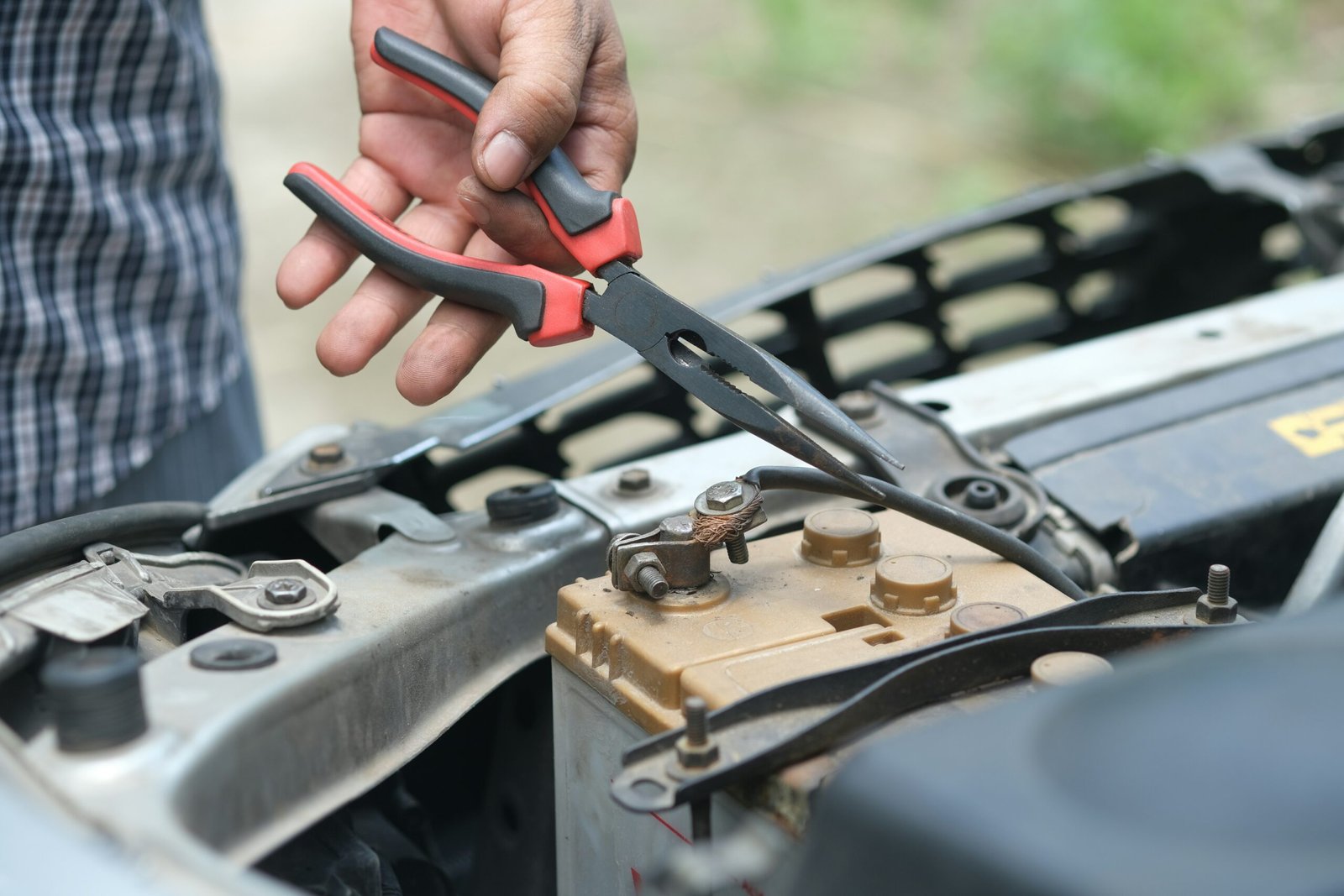In today’s article, we will explore the importance of educating your family members on gun safety to create a safe environment within your home. By equipping everyone with the knowledge and understanding of proper gun usage and storage, we can vastly reduce the risk of accidents or incidents occurring. With a friendly approach and open dialogue, we can ensure that everyone feels confident and responsible when it comes to firearms, promoting a secure and supportive atmosphere for everyone involved. Let’s delve into the details of educating family members on gun safe usage to foster a safe and harmonious environment.

This image is property of images.unsplash.com.
Importance of Gun Safety Education
Gun safety education is crucial for the well-being of individuals and communities. By teaching proper practices and instilling a sense of responsibility, accidents and injuries can be significantly reduced. Additionally, gun safety education plays a vital role in preventing unauthorized access to firearms and promoting responsible gun ownership. Through comprehensive education, individuals can develop the knowledge and skills necessary to handle firearms safely and ensure the safety of themselves and those around them.
Reducing accidents and injuries
One of the primary benefits of gun safety education is the reduction of accidents and injuries. By understanding and practicing safe handling and storage practices, individuals can minimize the risk of unintentional shootings and related injuries. Accidental discharges can have severe consequences, leading to injuries or even fatalities. Through education, individuals become aware of the potential dangers associated with firearms and learn how to handle them safely, drastically reducing the likelihood of accidents.
Preventing unauthorized access
Addressing the issue of unauthorized access to firearms is a critical aspect of gun safety education. By teaching individuals about safe storage practices, such as utilizing gun safes or lockboxes, individuals can significantly reduce the risk of firearms falling into the wrong hands. Unauthorized access to firearms can lead to tragic outcomes, especially when children or individuals with ill intentions gain access to them. Through education, individuals are empowered to take the necessary steps to secure their firearms responsibly, minimizing the chances of unauthorized access.
Promoting responsible gun ownership
Gun safety education also plays a crucial role in promoting responsible gun ownership. When individuals are educated about the responsibilities that come with owning firearms, they are more likely to adhere to those responsibilities. Responsible gun owners understand the importance of proper storage, regular maintenance, and safe handling practices. Through education, individuals develop a strong sense of accountability and contribute to the overall safety of their communities.
Understanding the Basics of Gun Safety
To ensure effective gun safety practices, it is essential to have a thorough understanding of the basics. This knowledge encompasses safe handling and storage practices, teaching children about guns, as well as appropriate ammunition usage.
Safe handling and storage practices
Understanding how to handle firearms safely is fundamental in avoiding accidents and injuries. Gun safety education emphasizes the importance of treating every firearm as if it were loaded, keeping the muzzle pointed in a safe direction, and keeping fingers off the trigger until ready to shoot. Additionally, individuals are taught how to safely unload and store firearms when they are not in use. Proper storage includes storing firearms unloaded, with ammunition stored separately, and securing firearms in a locked container or with a locking device.
Teaching children about guns
Educating children about the potential dangers associated with firearms is crucial in reducing accidents and unauthorized access. Children must understand that guns are not toys and that they should not touch or handle them without adult supervision. Gun safety education for children should focus on creating a respectful distance and encouraging immediate reporting to a trusted adult if they come across a firearm. By instilling these principles at an early age, children develop a healthy respect for firearms and are less likely to engage in unsafe behavior.
Appropriate ammunition usage
Understanding the importance of using appropriate ammunition is vital for gun safety. Different firearms are designed to work with specific types of ammunition, and using the wrong ammunition can be extremely dangerous. Gun safety education ensures that individuals are aware of the need to carefully select the correct ammunition for their firearms and the potential consequences of using improper ammunition. By following this vital aspect of gun safety, individuals can avoid catastrophic malfunctions or accidents that could otherwise occur.

This image is property of images.unsplash.com.
Developing a Family Safety Plan
To create a safe environment and ensure gun safety within a household, it is crucial to develop a family safety plan. This includes establishing clear rules and expectations, creating a safe storage plan, and communicating emergency procedures effectively.
Establishing clear rules and expectations
The foundation of a family safety plan lies in establishing clear rules and expectations surrounding firearms. It is essential to clearly explain who is allowed to handle firearms, when they are permitted to do so, and under what circumstances. By setting these guidelines, every family member understands their roles and responsibilities, minimizing the probability of accidents or unauthorized access. Open communication is key in ensuring that everyone is on the same page and understands the importance of adhering to the established rules.
Creating a safe storage plan
A vital aspect of any family safety plan is the creation of a safe storage plan for firearms. This plan should include using gun safes or lockboxes to secure firearms, storing them unloaded and with ammunition stored separately. Gun safes provide an added layer of security by preventing unauthorized access, especially when equipped with additional features such as biometric or electronic locks. Ensuring that firearms are properly stored reduces the risk of accidents, regardless of whether other safety measures are in place.
Communicating emergency procedures
In the event of an emergency, it is crucial that every family member knows how to respond. A comprehensive family safety plan should outline emergency procedures and include contact information for emergency services. This includes understanding how to safely exit the premises if a threat is identified, as well as how to contact law enforcement. By practicing and communicating these emergency procedures, family members can act swiftly and confidently during stressful situations, ensuring their safety and the safety of others.
Gun Storage Options and Best Practices
When it comes to gun storage, there are various options and best practices to consider. By implementing these practices, individuals can further enhance the safety and security of their firearms.
Using gun safes or lockboxes
One of the most effective ways to store firearms securely is by using gun safes or lockboxes. Gun safes are robust, secure storage units designed specifically for firearms. They provide protection against unauthorized access and can prevent theft or misuse. Lockboxes, on the other hand, offer a portable and compact storage solution, ideal for transporting firearms safely. Both options offer secure storage and are highly recommended for responsible gun owners.
Installing trigger locks or cable locks
Installing trigger locks or cable locks is an additional safety measure that can enhance firearms security. Trigger locks are designed to prevent the trigger from being pulled, rendering the firearm inoperable. Cable locks, on the other hand, secure the firearm by preventing the firearm from being chambered or loaded. These types of locks are inexpensive and easy to install, ensuring an extra layer of safety even when firearms are stored in gun safes.
Considering biometric or electronic locks
For added convenience and security, individuals may consider using biometric or electronic locks. Biometric locks utilize fingerprint recognition technology, allowing authorized users quick and convenient access to their firearms. Electronic locks, such as keypads or combination locks, provide secure access without the need for physical keys. These modern locking mechanisms ensure that only authorized individuals can access firearms while keeping them protected from unauthorized access.

This image is property of images.unsplash.com.
Implementing Firearm Training and Certification
To become proficient in the safe handling and use of firearms, individuals should consider attending safety courses and workshops, gaining proficiency in firearm handling, and obtaining any necessary licenses or permits.
Attending safety courses and workshops
Attending safety courses and workshops is an integral part of firearm education. These courses provide individuals with comprehensive knowledge on responsible firearm handling, storage, and usage. Qualified instructors teach proper techniques, safety protocols, and legal requirements. By participating in these courses, individuals develop the skills necessary to handle firearms safely and responsibly.
Gaining proficiency in firearm handling
Becoming proficient in the handling of firearms is essential for safe gun ownership. This proficiency involves regularly practicing and honing skills in a controlled environment under the guidance of experienced instructors. Proficiency includes acquiring skills such as proper grip, stance, and target acquisition. By continually improving these skills, individuals gain the confidence and competence necessary to handle firearms safely and effectively.
Obtaining necessary licenses and permits
Depending on the jurisdiction, individuals may need to obtain licenses or permits to legally possess and use firearms. These licenses and permits are typically obtained after completing the required training and demonstrating one’s ability to handle firearms responsibly. Complying with these legal requirements ensures that individuals have met the necessary standards and have undergone the appropriate training and background checks.
Promoting Open Communication
Open communication is a vital component of gun safety education. By encouraging discussions about gun safety, addressing concerns and questions openly, and avoiding stigmatization or resistance, individuals can promote a culture of safety and responsibility.
Encouraging discussions about gun safety
Creating an environment where open discussions about gun safety are encouraged is crucial. By engaging in conversations about firearm safety openly, individuals can share knowledge, experiences, and concerns. These discussions provide opportunities to learn from one another, exchange best practices, and identify potential risks or areas of improvement. Encouraging dialogue about gun safety fosters a culture of responsibility and continuous learning.
Addressing concerns and questions openly
When individuals have concerns or questions about gun safety, it is essential to address them openly and honestly. By providing accurate information and addressing misconceptions, individuals feel supported and empowered to make informed decisions. It is crucial to create an environment where individuals feel comfortable expressing their concerns and seeking clarification. By addressing concerns openly, everyone involved can work together to ensure the safety and well-being of the entire community.
Avoiding stigmatization or resistance
Gun safety education is most effective when it is approached without stigmatization or resistance. Individuals who may be hesitant or resistant to participating in gun safety education should be treated with empathy and understanding. By avoiding judgment and respecting differing perspectives, individuals are more likely to engage in the educational process willingly. A non-judgmental and inclusive approach contributes to a positive learning environment, where everyone can benefit from gun safety education.
Recognizing Warning Signs and Red Flags
Identifying warning signs and red flags is crucial for maintaining a safe environment. By understanding signs of inadequate gun safety and recognizing signs of potential misuse, individuals can take action to prevent dangerous situations.
Identifying signs of inadequate gun safety
Recognizing signs of inadequate gun safety is essential for intervention and prevention. These signs may include firearms left unsecured, inadequate knowledge or adherence to safe handling practices, or a disregard for storage guidelines. When individuals observe these warning signs, it is crucial to address the issue proactively. By intervening and providing education or assistance, it is possible to help individuals improve their gun safety practices and reduce the risk of accidents or unauthorized access.
Understanding signs of potential misuse
Being aware of signs of potential misuse is crucial in preventing harm. Signs may include erratic or volatile behavior, expressions of violence or aggression, or a pattern of seeking power or control through firearms. It is important to take these signs seriously and address them appropriately. This may involve reaching out to mental health professionals, local law enforcement, or other organizations specializing in gun safety. Early intervention can potentially prevent dangerous situations and promote the well-being of individuals.
Taking action when necessary
When warning signs and red flags are present, it is vital to take action promptly. Acting in a responsible and respectful manner can contribute to the safety of individuals and the community as a whole. This may involve engaging with law enforcement, notifying trusted individuals who can provide support, or seeking assistance from professionals specializing in gun safety and mental health. Taking action when necessary demonstrates a commitment to maintaining a safe environment and preventing potential harm.
Engaging Children in Age-Appropriate Education
Children should be educated about gun safety in an age-appropriate manner. By gradually introducing them to the topic, focusing on avoidance, and eventually progressing to comprehensive firearm education, children can develop a healthy understanding and respect for firearms.
Teaching young children to avoid guns
For young children, the primary focus should be on teaching them to avoid guns altogether. Parents and guardians can achieve this by emphasizing the importance of not touching firearms and immediately notifying an adult when they encounter one. Additionally, parents can teach children to “stop, don’t touch, run away, and tell a grown-up” if they come across a firearm. By instilling these principles, children learn to prioritize their safety and develop a responsible approach to firearms from an early age.
Introducing gun safety to older children
As children grow older, it becomes appropriate to introduce basic gun safety concepts. This includes teaching them about the potential dangers associated with firearms, emphasizing safe handling practices, and explaining the importance of adhering to rules and guidelines. Educating older children about basic gun safety creates a foundation upon which more comprehensive education can be built. It promotes responsible behavior and helps them understand the serious nature of firearms.
Progressing to comprehensive firearm education
Once children reach an appropriate age and demonstrate maturity, comprehensive firearm education can be introduced. This education includes hands-on training, teaching them how to handle firearms safely, and emphasizing responsible ownership and storage practices. By gradually progressing to this level of education, children gain practical knowledge and skills necessary for safely interacting with firearms. However, it is crucial to continuously reinforce the importance of responsible gun ownership and the potential consequences of irresponsible behavior.
Seeking Professional Guidance and Support
In the pursuit of gun safety, seeking professional guidance and support is highly beneficial. Experts in firearm safety and local law enforcement agencies can provide valuable insights and resources. Additionally, joining community organizations advocating for gun safety allows individuals to actively contribute to promoting responsible firearm use.
Consulting firearm safety experts
Firearm safety experts are invaluable resources when it comes to gun safety education. They possess in-depth knowledge and can provide guidance tailored to individual needs and circumstances. Consulting with experts allows individuals to address specific concerns, obtain accurate information, and receive personalized recommendations for safe firearm practices. Their expertise ensures that individuals receive the most up-to-date and relevant information, further enhancing gun safety.
Engaging with local law enforcement agencies
Local law enforcement agencies play a vital role in promoting gun safety within communities. They often provide educational programs and resources to assist individuals in developing safe practices. Engaging with law enforcement agencies not only allows individuals to access valuable information but also fosters positive relationships between law enforcement and the community. By collaborating with local authorities, individuals can contribute to a safer environment and benefit from the collective efforts to promote responsible gun ownership.
Joining community organizations advocating for gun safety
Community organizations dedicated to gun safety advocacy are valuable platforms for individuals to actively contribute to promoting responsible firearm use. These organizations facilitate education, awareness, and outreach programs that aim to enhance gun safety within the community. By joining these organizations, individuals have the opportunity to engage with like-minded individuals, participate in community initiatives, and have a direct impact on promoting and improving gun safety practices.
Regularly Assessing and Updating Safety Procedures
Gun safety procedures should not be stagnant but should be regularly assessed and updated to adapt to changing circumstances and family dynamics. By conducting periodic safety drills, revisiting storage practices as needed, and adapting to changes, individuals can ensure that their gun safety measures remain effective.
Conducting periodic safety drills
To ensure that everyone in the household is prepared for emergencies, it is essential to conduct periodic safety drills. These drills should encompass various scenarios, such as break-ins or unauthorized access to firearms. By practicing responses to these situations, family members develop muscle memory and gain confidence in their ability to act swiftly and appropriately. Regular safety drills reinforce the importance of gun safety and allow individuals to identify any areas that may require improvement or adjustment.
Revisiting storage practices as needed
Over time, family dynamics and circumstances can change, necessitating a reassessment of gun storage practices. As families grow or as new members join the household, it is crucial to evaluate whether current storage methods are still adequate. Revisiting storage practices ensures that firearms remain secure and inaccessible to unauthorized individuals. Individuals should regularly inspect locks, safes, or other storage devices to ensure they are functioning properly and seek necessary upgrades or modifications as needed.
Adapting to changes in family dynamics
Changes in family dynamics, such as children reaching the appropriate age for firearm education or the addition of new firearms, require adjustments to gun safety practices. As children mature, their education should progress accordingly, expanding their knowledge and skills. Additionally, new acquisitions necessitate considering the impact on the overall safe storage plan. By adapting to changes in family dynamics, individuals can maintain a safe environment and ensure that gun safety education remains relevant and effective.
In conclusion, gun safety education is of paramount importance in reducing accidents, preventing unauthorized access, and promoting responsible gun ownership. Understanding the basics of gun safety, developing a family safety plan, implementing proper storage practices, attending firearm training, promoting open communication, recognizing warning signs, engaging children in age-appropriate education, seeking professional guidance, and regularly updating safety procedures are all essential aspects to ensure a safe environment. By prioritizing education, responsible gun ownership can be achieved, contributing to the well-being and safety of individuals and communities as a whole.
